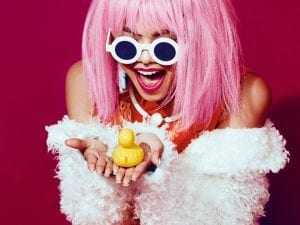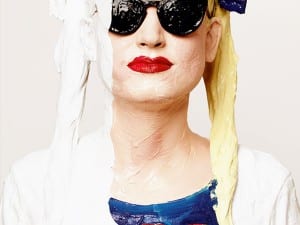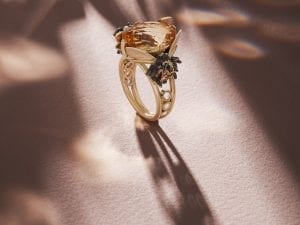Jess Littlewood’s digital collages present us with worlds composed of found fragments reconfigured to evoke the ethereal, the utopian and the uncanny. Having graduated from Central St Martins in 2010, Littlewood has steadily built up a body of work that explores the myths and fantasies which occupy our collective consciousness. A raft of bold new works made for Modern Mythology, a group exhibition with Lindsey Bull and Adam Dix, see Littlewood’s references to 1970s cults and UFO in her eerie, unpopulated landscapes. Drawing her source material from the swirling cosmos of online imagery, Littlewood’s compositions fold the transcendental back into the prosaic. Recycling images herself, the artist also references the recycling of ideas and aesthetics on a cultural level; in Phenomenon, modern Gothic architecture reflects the strange conflation of UFO cults and Christianity in America, an example of cultural and aesthetic tropes collapsing in on one another. Revealing the underlying commonalities and shared motivations behind often dark and unfathomable pursuits (We All Drank the Kool Aid references the Jonestown massacre) is the great strength of Littlewood’s work; she may not depict people, but shows that utopian concepts and myth-making embody fundamental human needs, tied up with humanity’s greatest strengths and weaknesses. As she says: “Ritual and myth just feel so human, it’s like they are our building blocks. Myth is creative, it’s like what I am trying to do when I make my work; focus in on something fundamental about us and try to reveal a new kind of truth.” We speak further with the artist:
A: Could you describe your working process? Do you have a clear idea of how each work will look from the beginning – how much is planned/left to chance?
JL: Images can be in my peripheral vision for a really long time before I find a use for them, I now have a large archive of imagery that I work from which is always growing. Much of the time that goes into making my work is spent sourcing the images, predominantly from Internet search engines. The random nature of this feeds into the work; sometimes I get an image in my head of exactly how a work will look, other times it is a slower more tentative process, building layers and testing out images.
Everything is repeated and recycled, and in the contemporary world the rate of re-appropriation is faster than ever. This is one of the most exciting aspects of making the work; finding that perfect image which, because it has been reused and re-imagined so many times already, holds so much currency. Contributing to that cycle is really satisfying.
A: How do you see the connection between fantasy and reality in your work? And how does the digital mediate between them?
JL: The relationship between reality and fantasy in relation to anything digital is an interesting area, and is particularly relevant to my practice. The worlds I attempt to create are at once strange and familiar; they present a heightened version of reality. This interplay between the real and the fictive gives the work a grounding while allowing for more abstract ideas to be played out. The process of making ties in here, I am taking real-life images and manipulating them to become something other; this is a practice which historically has connections with things like propaganda.
A: How does this collision between fantasy and reality manifest in particular works?
JL: The moments when our most appealing characteristics meet our worst have always interested me and I think an example of that is the creation of cults, and the making of cult leaders. We Drank all the Kool Aid directly references the aerial photographs taken at Jonestown on discovery of the mass suicide [cult leader Jim Jones led around 1000 followers to the Guyanese jungle, where he poisoned them with Kool Aid laced with cyanide] but also evokes ideas of lost hope and vulnerability. The piece also talks about a moment in time when the idealistic dreams of the 1960s counter culture, formed only a decade before, seem already so far away. Iconic 1970s ceramics float in the still swimming pool as symbols of lost hope.
Modern Mythology showed at The Contemporary London, 591-593 Harrow Road, London, from 8 October – 7 November.
Laura Purseglove
Follow us on Twitter @AestheticaMag for the latest news in contemporary art and culture.
Credits
1. Jess Littlewood, Phenomenon (detail), 2015. Courtesy of the artist.





